Abstract
1. The activity of phosphofructokinase in sheep liver was found to be dependent on the composition and molarity of the buffer used in extraction. Under optimum conditions a value of 4–7μmoles/min./g. wet wt. of tissue was obtained. 2. The enzyme was purified 480-fold by a combination of ammonium sulphate fractionation, heat treatment in the presence of ethanol, DEAE-cellulose chromatography and Sephadex G-200 gel filtration. The final specific activity was 18·5μmoles/min./mg. of protein. 3. The purified enzyme was inhibited by ATP and citrate, the degree of inhibition depending on the concentration of fructose 6-phosphate, magnesium chloride and ammonium sulphate, as well as on the pH. ATP and citrate inhibition was overcome by AMP and fructose 1,6-diphosphate. 4. The enzyme was also inhibited by NADH and NADPH in a manner largely independent of other components of the assay medium. AMP and fructose 1,6-diphosphate were not able to overcome this type of inhibition. 5. Octanoate was not an inhibitor of phosphofructokinase. 6. Differences between these results and those of other workers are discussed.
Full text
PDF


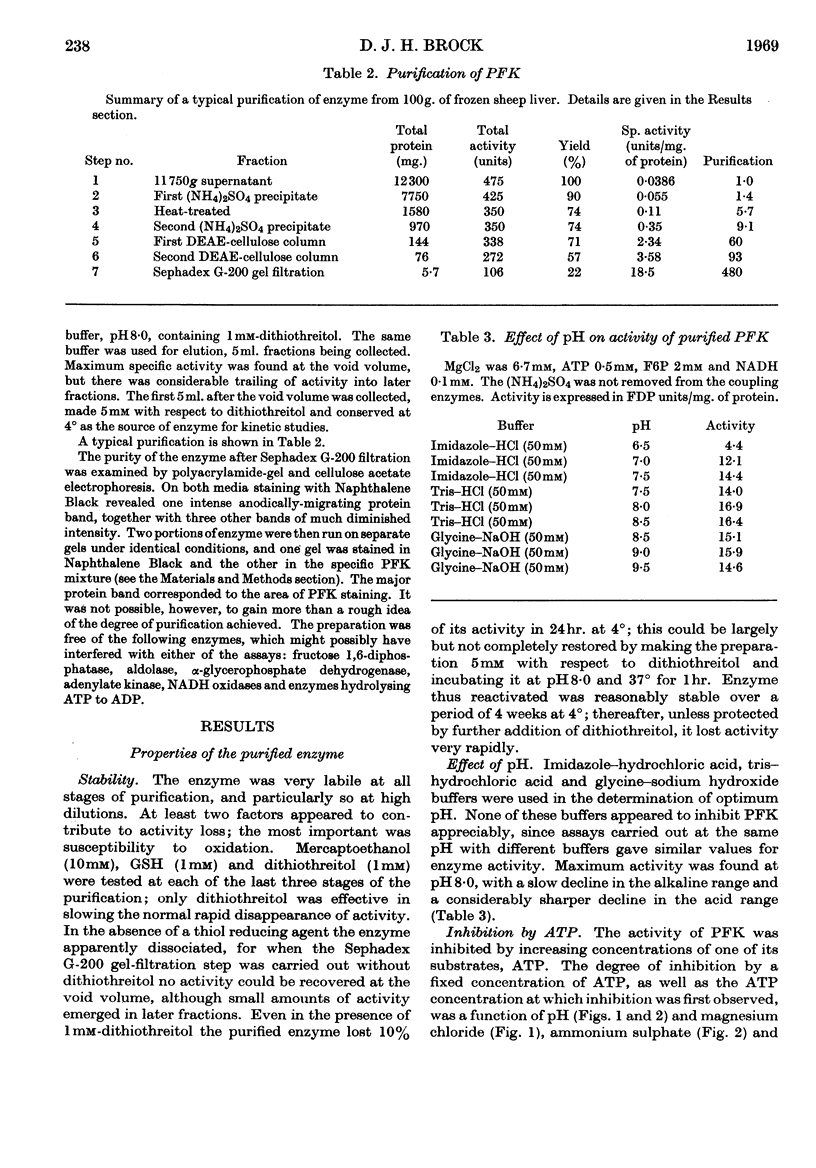
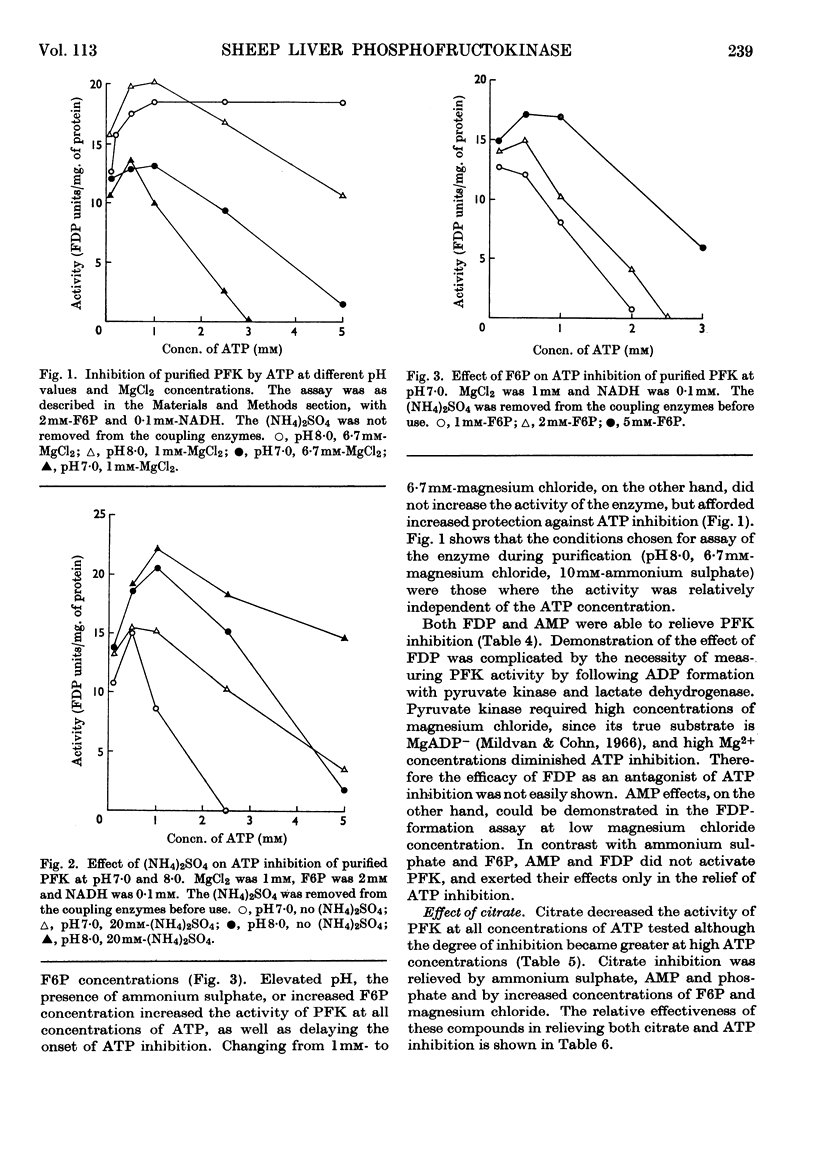
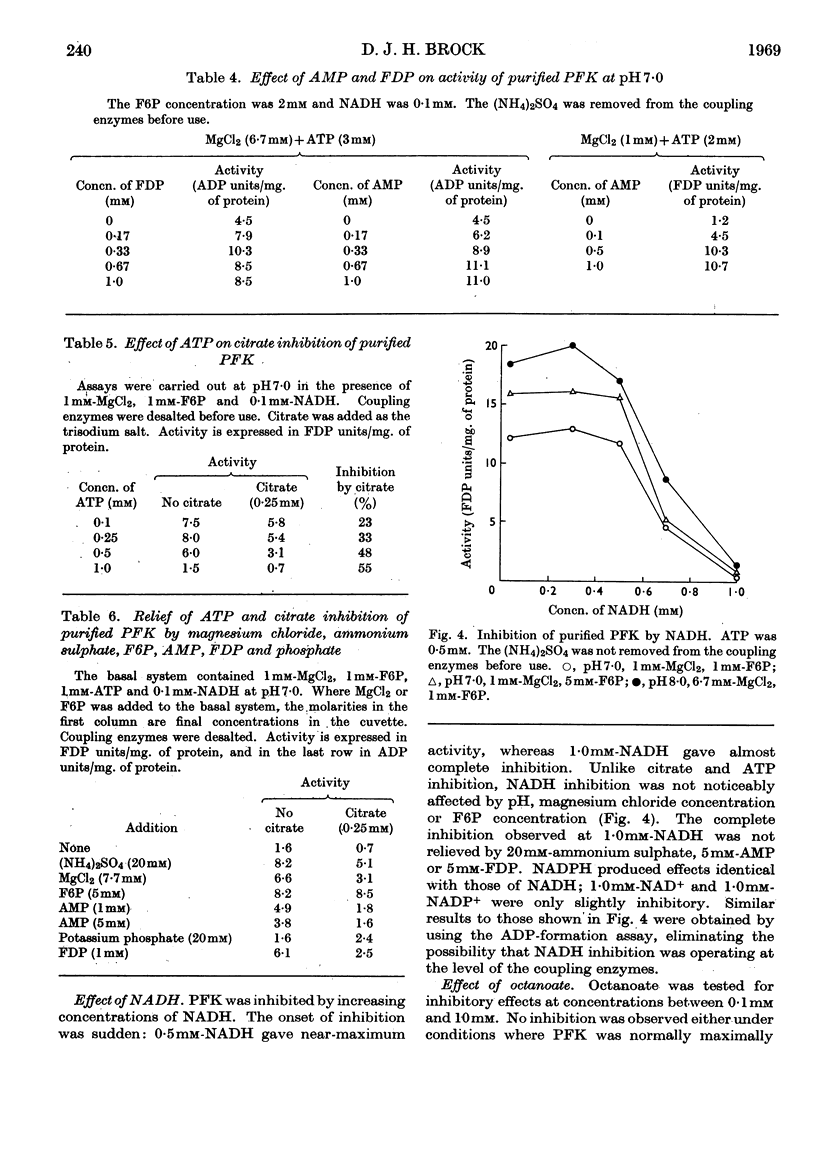
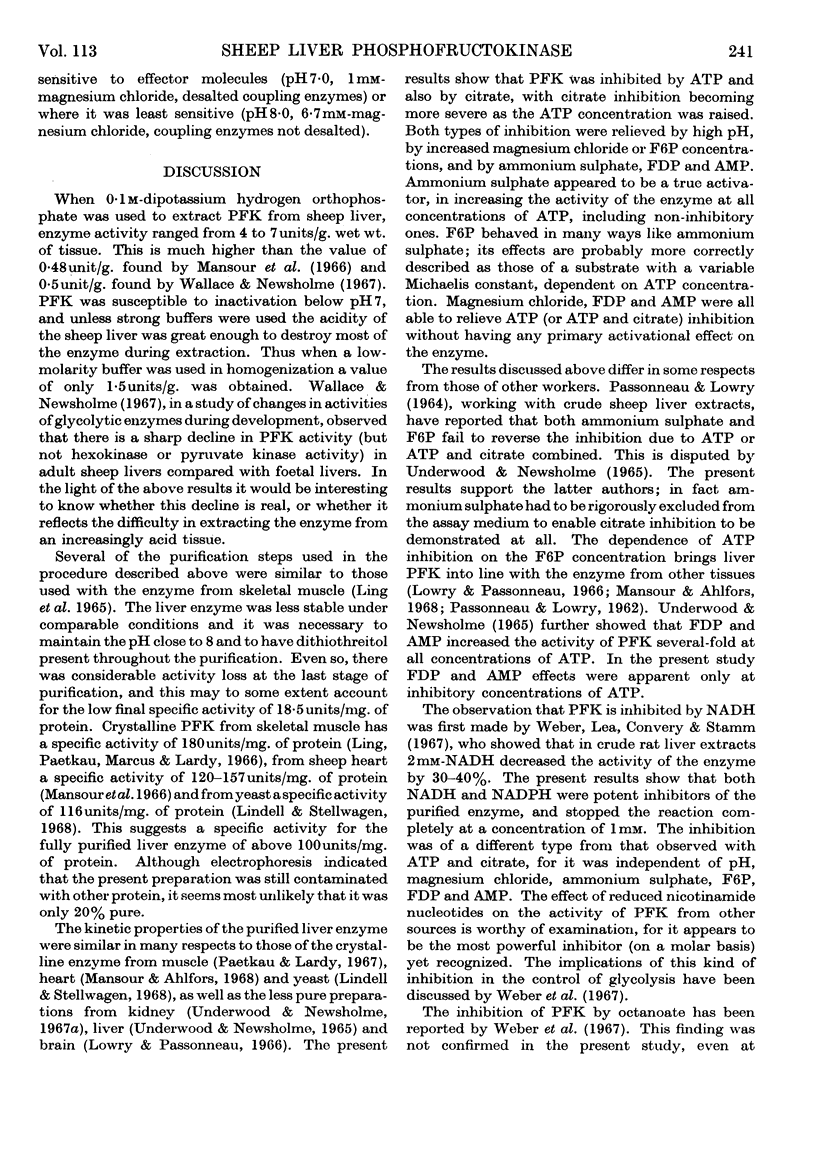
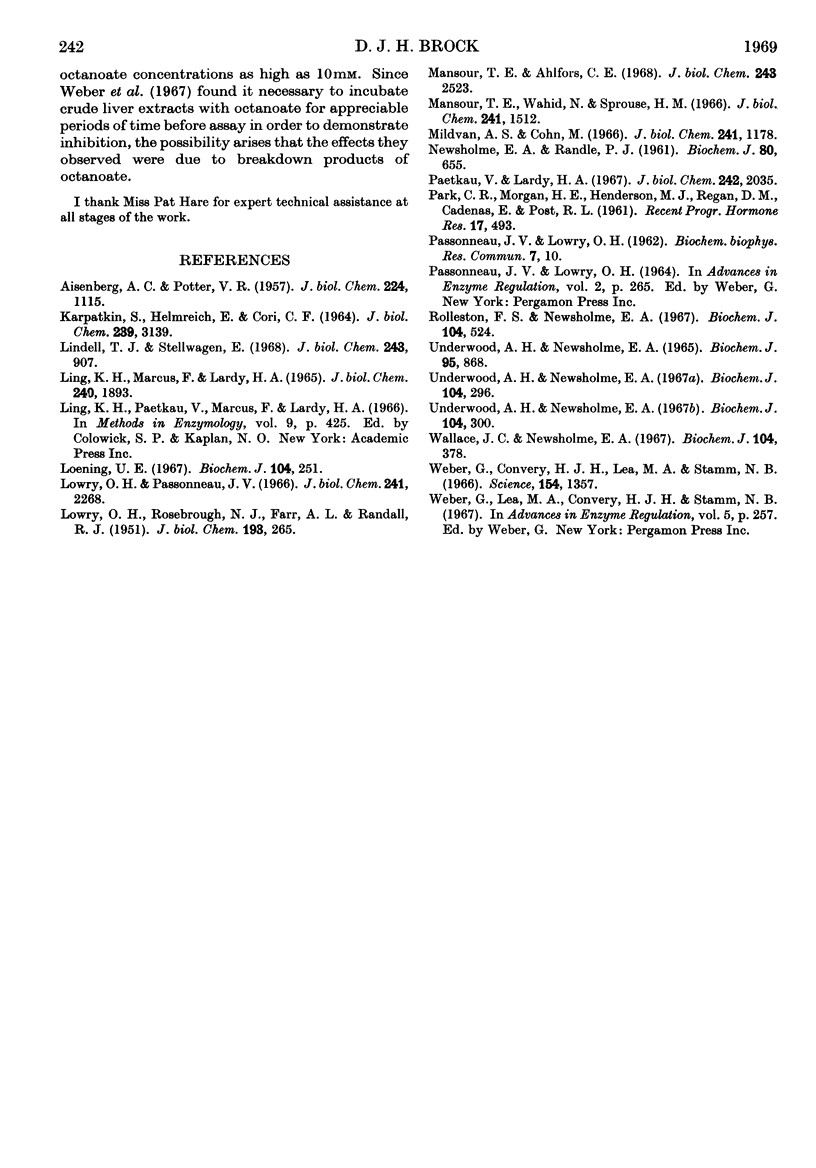
Selected References
These references are in PubMed. This may not be the complete list of references from this article.
- AISENBERG A. C., POTTER V. R. Studies on the Pasteur effect. II. Specific mechanisms. J Biol Chem. 1957 Feb;224(2):1115–1127. [PubMed] [Google Scholar]
- KARPATKIN S., HELMREICH E., CORI C. F. REGULATION OF GLYCOLYSIS IN MUSCLE. II. EFFECT OF STIMULATION AND EPINEPHRINE IN ISOLATED FROG SARTORIUS MUSCLE. J Biol Chem. 1964 Oct;239:3139–3145. [PubMed] [Google Scholar]
- LING K. H., MARCUS F., LARDY H. A. PURIFICATION AND SOME PROPERTIES OF RABBIT SKELETAL MUSCLE PHOSPHOFRUCTOKINASE. J Biol Chem. 1965 May;240:1893–1899. [PubMed] [Google Scholar]
- LOWRY O. H., ROSEBROUGH N. J., FARR A. L., RANDALL R. J. Protein measurement with the Folin phenol reagent. J Biol Chem. 1951 Nov;193(1):265–275. [PubMed] [Google Scholar]
- Lindell T. J., Stellwagen E. Purification and properties of phosphofructokinase from yeast. J Biol Chem. 1968 Mar 10;243(5):907–912. [PubMed] [Google Scholar]
- Loening U. E. The fractionation of high-molecular-weight ribonucleic acid by polyacrylamide-gel electrophoresis. Biochem J. 1967 Jan;102(1):251–257. doi: 10.1042/bj1020251. [DOI] [PMC free article] [PubMed] [Google Scholar]
- Lowry O. H., Passonneau J. V. Kinetic evidence for multiple binding sites on phosphofructokinase. J Biol Chem. 1966 May 25;241(10):2268–2279. [PubMed] [Google Scholar]
- Mansour T. E., Wakid N., Sprouse H. M. Studies on heart phosphofructokinase. Purification, crystallization, and properties of sheep heart phosphofructokinase. J Biol Chem. 1966 Apr 10;241(7):1512–1521. [PubMed] [Google Scholar]
- Mildvan A. S., Cohn M. Kinetic and magnetic resonance studies of the pyruvate kinase reaction. II. Complexes of enzyme, metal, and substrates. J Biol Chem. 1966 Mar 10;241(5):1178–1193. [PubMed] [Google Scholar]
- NEWSHOLME E. A., RANDLE P. J. Regulation of glucose uptake by muscle. 5. Effects of anoxia, insulin, adrenaline and prolonged starving on concentrations of hexose phosphates in isolated rat diaphragm and perfused isolated rat heart. Biochem J. 1961 Sep;80:655–662. doi: 10.1042/bj0800655. [DOI] [PMC free article] [PubMed] [Google Scholar]
- PARK C. R., MORGAN H. E., HENDERSON M. J., REGEN D. M., CADENAS E., POST R. L. The regulation of glucose uptake in muscle as studied in the perfused rat heart. Recent Prog Horm Res. 1961;17:493–538. [PubMed] [Google Scholar]
- Paetkau V., Lardy H. A. Phosphofructokinase. Correlation of physical and enzymatic properties. J Biol Chem. 1967 May 10;242(9):2035–2042. [PubMed] [Google Scholar]
- Passonneau J. V., Lowry O. H. The role of phosphofructokinase in metabolic regulation. Adv Enzyme Regul. 1964;2:265–274. doi: 10.1016/s0065-2571(64)80018-2. [DOI] [PubMed] [Google Scholar]
- Rolleston F. S., Newsholme E. A. Control of glycolysis in cerebral cortex slices. Biochem J. 1967 Aug;104(2):524–533. doi: 10.1042/bj1040524. [DOI] [PMC free article] [PubMed] [Google Scholar]
- UNDERWOOD A. H., NEWSHOLME E. A. PROPERTIES OF PHOSPHOFRUCTOKINASE FROM RAT LIVER AND THEIR RELATION TO THE CONTROL OF GLYCOLYSIS AND GLUCONEOGENESIS. Biochem J. 1965 Jun;95:868–875. doi: 10.1042/bj0950868. [DOI] [PMC free article] [PubMed] [Google Scholar]
- Underwood A. H., Newsholme E. A. Control of glycolysis and gluconeogenesis in rat kidney cortex slices. Biochem J. 1967 Jul;104(1):300–305. doi: 10.1042/bj1040300. [DOI] [PMC free article] [PubMed] [Google Scholar]
- Underwood A. H., Newsholme E. A. Some properties of phosphofructokinase from kidney cortex and their relation to glucose metabolism. Biochem J. 1967 Jul;104(1):296–299. doi: 10.1042/bj1040296. [DOI] [PMC free article] [PubMed] [Google Scholar]
- Wallace J. C., Newsholme E. A. A comparison of the properties of fructose 1,6-diphosphatase, and the activities of other key enzymes of carbohydrate metabolism, in the livers of embryonic and adult rat, sheep and domestic fowl. Biochem J. 1967 Aug;104(2):378–384. doi: 10.1042/bj1040378. [DOI] [PMC free article] [PubMed] [Google Scholar]
- Weber G., Convery H. J., Lea M. A., Stamm N. B. Feedback inhibition of key glycolytic enzymes in liver: action of free fatty acids. Science. 1966 Dec 9;154(3754):1357–1360. doi: 10.1126/science.154.3754.1357. [DOI] [PubMed] [Google Scholar]
- Weber G., Lea M. A., Convery H. J., Stamm N. B. Regulation of gluconeogenesis and glycolysis: studies of mechanisms controlling enzyme activity. Adv Enzyme Regul. 1967;5:257–300. doi: 10.1016/0065-2571(67)90020-9. [DOI] [PubMed] [Google Scholar]


